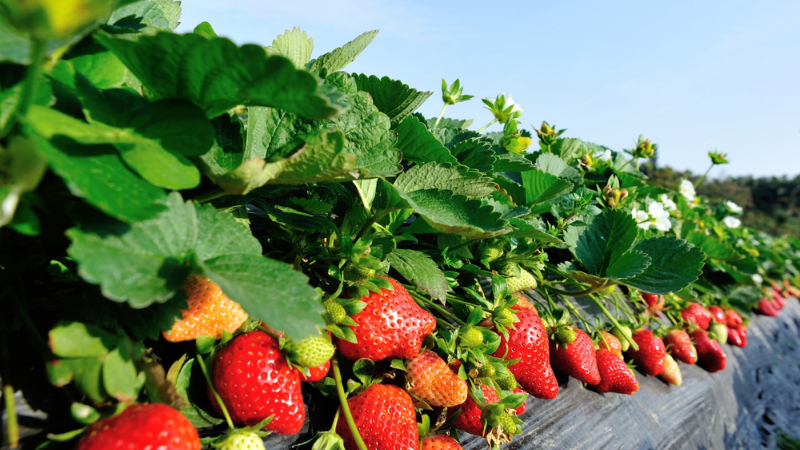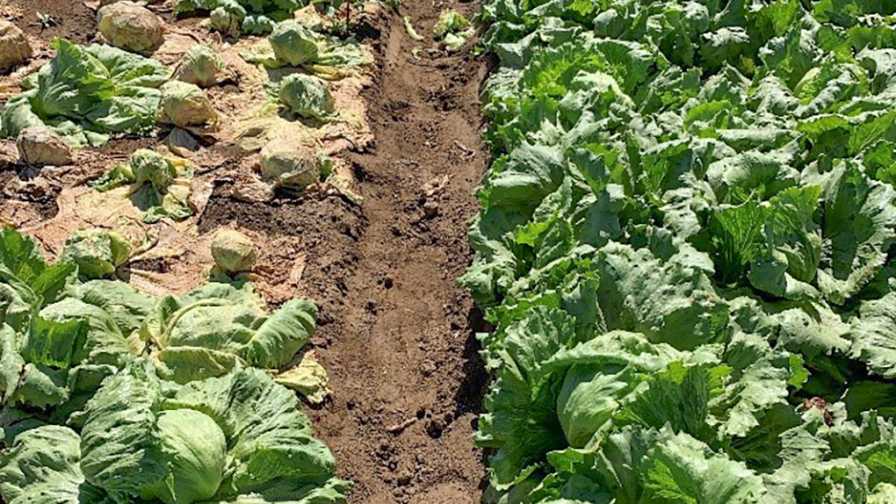Grower Guidelines: Plan Ahead To Avoid Problems Later

photo shows a boron deficiency in cantaloupe.
While part of the country produces vegetables throughout the year, many producers are waiting for a new season to start. The holidays have hopefully provided time for reflection on the season past and relaxation before the next one starts.
Each season has its own challenges and 2008 was certainly no exception. From high production costs to the Salmonella debacle, growers faced many issues last season and as usual a lot of them were unforeseen. Many issues growers face cannot be predicted — weather being the most obvious.
However, growers can avoid some problems by careful planning before the first seed is planted. While the wind still whistles in the arctic air from the north, now is a good time to finalize plans for the season to come. Many decisions for the new season have already been formulated, but there is still time to review plans for 2009. Sometimes many of the basic decisions get taken for granted and can come back and bite us during the season.
Take Your Tests
I hope that most growers have taken their soil tests by now and have already begun to apply needed lime. But, believe it or not, soil pH is one of the main culprits that I see each year in problem fields. Not only can low pH be a problem, but high pH is something I see more often than one might expect.
Most vegetables require soil pH in the range of 6.0 to 6.5. However, for crops grown on plastic mulch where there may be two to three crops grown before new plastic is laid, starting with a soil pH of 6.0 is not a good idea. By the time you have grown two or three crops, the pH has often dropped to 5.7 or below.
Now we all know that pH has a direct effect of phosphorous availability and the availability of many minor elements. In addition to phosphorous, boron, and
manganese availability drop off drastically above a pH of 7.0. When pH falls below 6.0, we start to see a decline in calcium and molybdenum availability. Also, we can see certain toxicities when the pH is not maintained in a proper range.
This may seem basic and obvious to some, but as often as I see problems related to this issue, proper soil testing and liming is, at times, an issue that falls through the cracks. Starting the season with a pH of 6.2 to 6.5 would be better in some soils than being satisfied at 6.0.
Write It Down
There are many other areas where good planning can help avoid problems. Having a written plan before the season starts helps to keep everyone on track. Sometimes that plan has to change as unforeseen events happen, but it is a good way to avoid letting something important slip by when things get busy.
With the potential loss of some soil fumigants, it will become more important to look at crop rotation in planning. The best method to control problem weeds, such as nutsedge, outside of fumigation is to rotate to crops which have herbicides that can be used to control those problem weeds. This will reduce problem weed populations, allowing you to later plant a crop for which no herbicides are labeled for those weeds.
Outline a good pesticide strategy before the season starts. You may not know exactly which pests will rear their ugly heads this season, but for preventative sprays, outline a plan that will rotate chemistries so that you can minimize the chance of pesticide resistance. Look at the labels and see what’s new for this year that can help with good resistance management.
Choose Resistant Varieties
You may have already bought seed for the year, have plants ordered, or have your transplants growing. If you haven’t, keep in mind that one of the best ways to combat plant diseases is through resistant varieties. However, try not to switch to a new variety altogether until you have tried it on your farm.
Even though your neighbor has had good success with a variety, his production practices may be different enough from yours to make a difference. Varieties should be selected based on market acceptance, pest resistance, yield, and adaptability, primarily.
Finally, good planning is an ongoing process. Make plenty of notes throughout the season and keep records of good things and negative things that you see in regard to particular fields, particular pesticides, particular varieties, etc. These are things that you should review in the off-season. Repeating the same plan year in and year out just means repeating any mistakes that are in that plan. Sometimes it’s the simple things we have the most control over that can make the difference.









